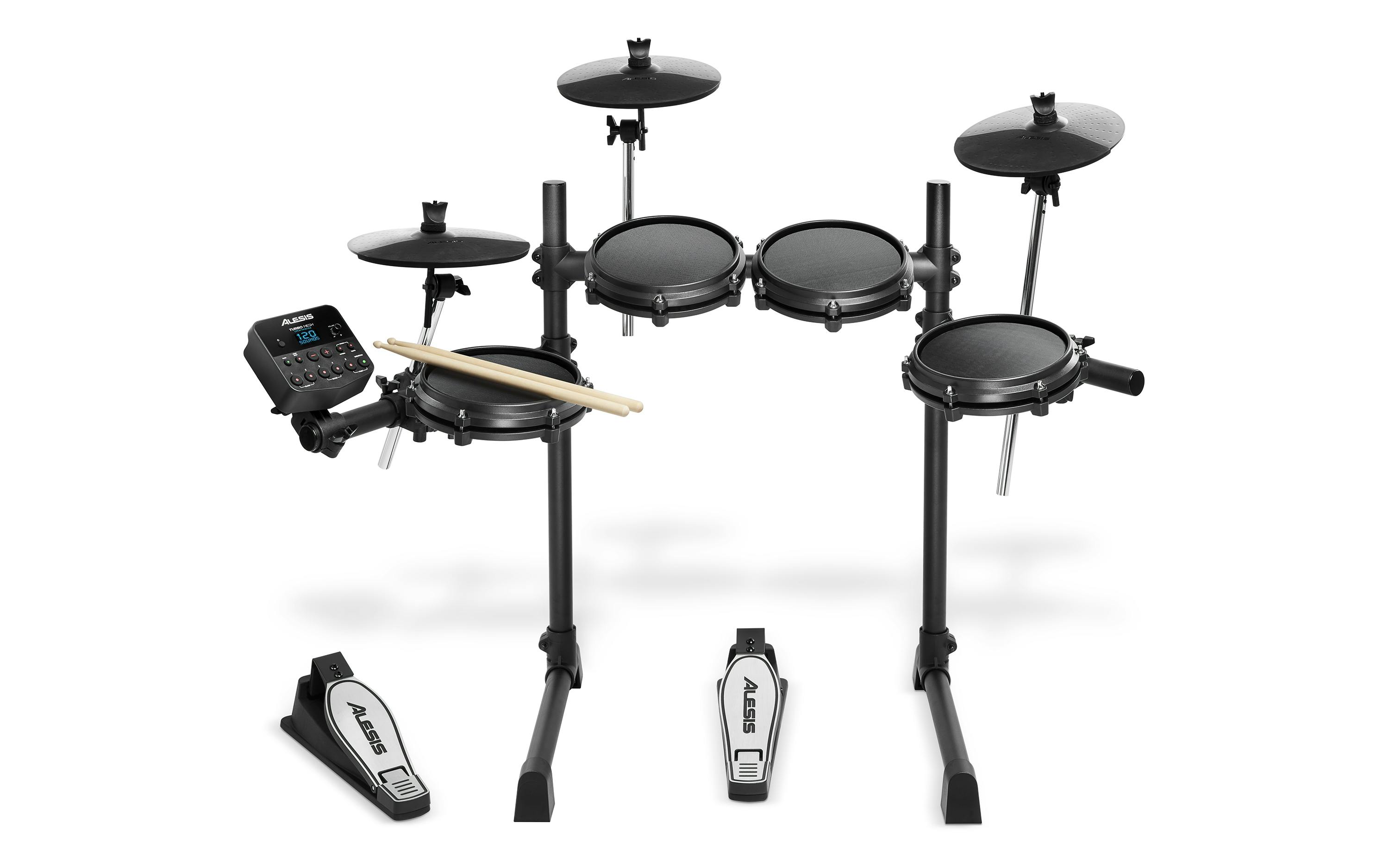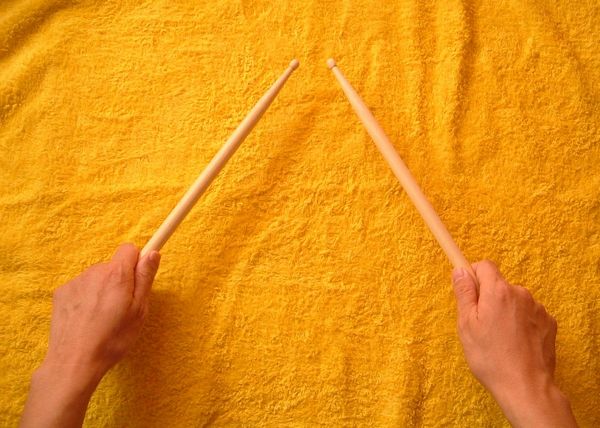- What are the Different Parts of a Drum Kit?
- Which Drum Kit is Best for a Beginner?
- How Do I Learn to Play the Drums?
- Best Songs to Learn on Drums for Beginners
If we’re talking all things drums, we’re going to need to start with the basics…
What are the Different Parts of a Drum Kit?
Bass Drum
The bass drum forms the backbone of any drum kit. It’s the biggest drum in any set and can be made from woods like mahogany, birch and maple. They’re sometimes even crafted from metal. When played with a kick pedal – single or double, depending on your preferences -, it projects a deep thud. Out of every element of the kit, it’s arguably the most important piece as it provides yourself (and any accompanying musicians) with a sense of time and rhythm. Bassists especially will use it as a sonic focal point, allowing them to lock in with your playing. This is important for any rhythm section that’s worth their salt.
Snare
The snare is an integral part of any beat. It’s the centrepiece of not just your kit, but much of actual music itself – no matter the genre. Depending on tuning, it will usually deliver a sharp crack. This sound will also be influenced by the kind of material your snare is made from. The most popular kinds are birch; maple; poplar; walnut; mahogany; beech; brass; steel; aluminium; titanium; or copper.
A snare (and your bass drum and toms, but more of them in a second) usually features two types of head: a batter and a resonant. The batter head is the surface that you play on. It turns the energy created by any strike into sound. Your batter head will also affect durability, the level of rebound, volume, tone and attack. The resonant head sits on the bottom of the snare. As its name suggests, it resonates. This works in conjunction with the rest of the drum, amplifying frequencies that are produced by hitting the batter side, as well as the ones emanating from the shell itself.
Toms
Most kits will feature two kinds of toms – both floor and rack. The rack toms are also sometimes referred to as ‘high’ and ‘mid’ toms respectively. However, some drummers will actually remove the ‘mid’ tom, resulting in a more minimal setup (you can see this in the photo below). You should think of toms as sonic flavouring; they’re usually used during a drum fill (a series of strikes progressing around the kit). Your toms can also be used as the basis for a beat too.
Hi-Hats & Crash/Ride Cymbals
A hi-hat consists of two cymbals – a bottom half and a top half. They sit together. Both are positioned on a stand with a pedal. This pedal allows you to open and close the cymbals as you see fit. Along with a ride cymbal, they can be the basis of any beat. Speaking of ride cymbals, they will usually be the largest cymbal you use. They boast a big surface area alongside a prominent bell. Both offer different sounds, allowing you to mix it up depending on the musical scenario you find yourself in. Crash cymbals come in many different guises and are used to accent your beats, delivering a sudden burst of sound when struck.

How do you Tune Drums?
Tuning is an essential skill that’s worth developing if you want your drums to sound good (and actually maintain their sound too). Many drummers work out their own unique technique when it comes to tuning, but it’s usually influenced by a similar method that I’ll outline here.
Firstly, you need to make sure that your tension rods are tightened to a similar level. This can be done using a drum key. Now you’re ready to get started proper. Starting from the top, you’ll want to give the first tension rod a full turn. Then, you’ll need to do the same for the tension rod diagonally across from it. This can then be done moving around the drum in a clockwise direction.
You’ll want to have a stick handy to test that the sound meets your requirements while you tune. Your sound will all be down to personal preference at the end of the day; if you find it’s too tight, go back and loosen the rods; if you still find your sound is too loose, keep tightening them. The head should then be smooth without any wrinkles in it once you’re finished.
This technique can be applied to your bass drum, toms and snare. For the bass drum, you can also put a towel, blanket, bedding or pillows inside it to further alter your sound.
Which Drum Kit is Best for a Beginner?
Electronic vs Acoustic
But what kind of kit is actually going to be suitable for you, I hear you ask? Well, it ultimately depends on your own preferences and what you think you’re going to be using it for (be it practice or playing live etc). Both acoustic and electronic drum kits come with a whole list of pros and cons, with many beginner models available at a similar price point in both categories – making it even more difficult to decide! We’ve tried to outline the positives of both below…
Electronic
- Great for quiet practice: sounds are projected directly into your headphones. However, it must be said that rubber pads are not completely silent. Mesh pads are a lot quieter though. If you don’t want to drive your neighbours or family mad, then an electronic kit is probably the best option.
- Smaller footprint: most electronic kits are much smaller than their acoustic counterparts. This makes them easier to fit into even the tightest of spaces. It also allows you to pack them away quickly and easily when they’re not in use.
- Increased portability: many electronic kits are attached to a rack-style system. This makes them easy to fold down into one flatpack-like unit. You’ll be able to transport them easily if you need to (unlike acoustic kits which require individual cases for each piece).
- More features: a multitude of drum and percussion presets to choose from; customisable kit sounds; the ability to upload your own samples; integrated training functions (which can be especially useful when you’re just starting out); easily play along to your favourite tracks; shall we go on? Most electronic kits contain a selection of features like this that just aren’t possible with a traditional acoustic kit.
- You don’t have to tune them!
Make sure to take a look at our range of electronic drum kits!




















Responses & Questions